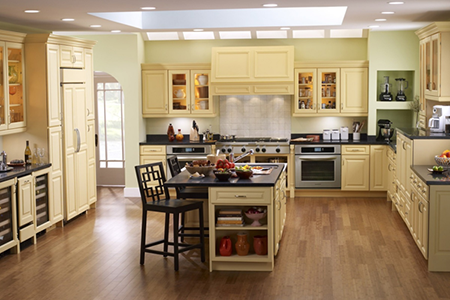In their cultural and spiritual life the Vietnamese people are deeply influenced by Oriental hilosophies concerning the interactions between Heaven (thien), Earth (dia), and Human beings (nhan),…
In their cultural and spiritual life the Vietnamese people are deeply influenced by Oriental philosophies concerning the interactions between Heaven (thien), Earth (dia), and Human beings (nhan), between the positive and the negative, male and female principles (Yin- Yang), and the five basic elements (ngu hanh) of the Universe: Water (thuy), Fire (hoa), Wood (moc), Metal (kim), Earth (tho). These interactions which are very close and complex pervade everything and govern the relationship among all physical bodies and creatures in the Universe from grains of sand to human beings and heavenly bodies.
In the field of architecture, these philosophies find expression in a rather abstract theory called “phong thuy” (feng-shui; “wind and water”). It is believed that if the selected site of a house or any other construction project is in proper relation with the outlying watercourse, pond and lake, mountains and hills, and trees, as well as the oroscope of the owner, that would bring good fortune and luck to him or his offspring in the future.

Formerly, importance was attached to the orientation of the exit and entry doors, the floor space, the measurements and proportions of various components of the structure. The sites of tombs were considered to be very important, as they were believed to exert a great impact on the fate of the offspring of the dead. Therefore, geomancers were hired by Kings and important dignitaries to select the appropriate sites for their tombs, which were usually built while they were still alive. With respect to major projects, artificial mounts and ponds were built, and underground water courses were found if such natural elements did not exist in the immediately outlying areas. Most of the old Vietnamese pagodas and temples are located near a river or a lake and are surrounded by old trees. Royal tombs in Hue are surrounded by lotus flower ponds, artificial mountains and forests, flower gardens, tree gardens, pine slopes, bridges.
A good construction project must have all the following elements:
– “a dragon and a tiger” (tay long, tay ha) on both sides (they mean surrounding hills and mountains);
– a “front defense” (tien an), that is a mount or a hill in front of the concerned structure;
– a “back”: a mountain slope behind the structure;
– a pond or watercourse (minh duong) in front of the structure;
– a pond of watercourse (thao duong) behind the structure.
Attention should be given to the location of:
– the main door connecting the house interior with the outside space;
– the main room of the house owner;
– the kitchen and other service rooms.

Auspicious dates and hours are selected and rituals are performed during specific stages of the construction process to pray to supernatural forces (gods, the Buddha, ancestors’ spirits) for the protection, for example:
– “Phat moc”: ritual of preparing construction materials
– “Dong tho”’: ground-breaking
– “Thuong tru”: setting up columns and walls;
– “Thuong luong”: setting up the roof;
– “Nhap trach”: entering the house.
There are also widespread taboos regarding the location, orientation measurement of the house, topography and other houses in the immediate vicinity. Various kinds of amulets are buried under the ground – floor of the house, or are stuck to, or hung on the walls as protection from evil spirits.



